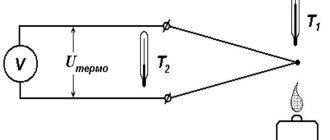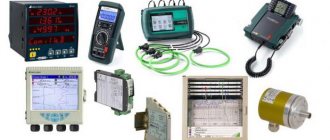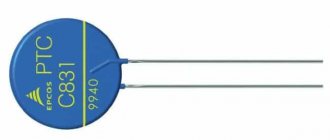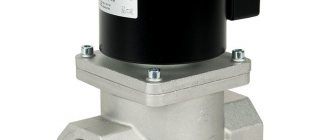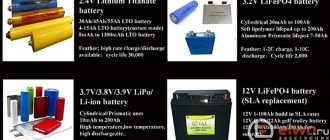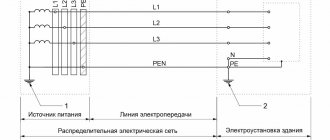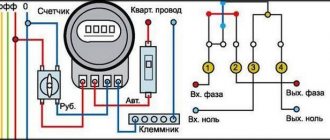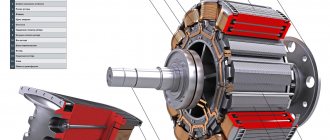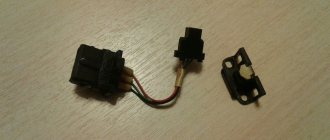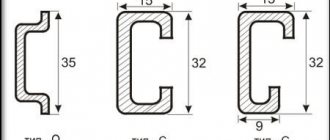Types of valves
Modern solenoids, unlike outdated classic ones, are somewhat more complex and are controlled by pulse modulation. This innovation allowed the valve to open much smoother than usual. As a result, the amount of incoming oil increases, smoothly spreading over the parts, providing better lubrication of the automatic transmission.
The advantage of modern solenoids is their economy in case of failure. Replacements are made one at a time, and not as a set as in the classic version.
Conclusion
Faulty automatic transmission solenoids should never be ignored. If the valve fails, the effect will be the same as when the clutch on a manual transmission is not depressed. The clutch pack will begin to slip, and the friction clutches will wear out catastrophically quickly. If at least one solenoid fails, it is necessary to diagnose, clean and repair the device, or buy a new one. Fortunately, the secondary auto parts market is open even to car enthusiasts from remote regions. We recommend buying original spare parts or analogues under the names of well-known brands. Do not forget to check the authenticity of the products - you can even find counterfeit solenoid valves on the secondary market.
Valve types today
Among the current parts, such as the automatic transmission solenoid, we can distinguish several of the most common types of auto solenoid valves.
So:
1. 3, 4, 5-WAY solenoid valves, they serve as “switches”. There are both ball and spool valves.
2. EPC or LPC - these models perform the control function of line pressure.
3. TCC serves more to lock the torque converter.
4. Shift solenoid - a switch solenoid used to change speeds, it is also called a “shifter”.
5. Modern valves, the so-called functional ones, which provide control of the valves directly on the stove itself, similar to a transistor in a standard electrical circuit.
6. The model ensures the quality of gear shifting and it works only for soft shifting with sliding gears.
7. Solenoid controlling lubricant cooling. Its operation is similar to a thermostat, which opens a channel to lower the oil temperature through an external radiator, for example.
As you can see, today there are a very large number of types and types of solenoids. Moreover, their designs and capabilities are constantly expanding and becoming more complex at the same time, and diagnostics and repairs are simplified to a banal replacement. Although until recently, in most cases cleaning of solenoids was required.
Indirect acting solenoids
This type of solenoid is more complex and will take more time to explain the mechanism of its operation. Simply put, an indirect acting solenoid consists of two valves connected into one mechanism. The main valve is a spool that works according to the principle described above, the second mechanism used is the pilot valve, which is located between the spool and the electromagnet. The control valve is a small direct-acting solenoid that activates the push of the large spool. Please note that the solenoid shown in this image is a direct acting solenoid as it acts directly on the control valve, but the entire assembly is an indirect acting solenoid.
The main difference between direct acting and indirect acting solenoids is how they interact with the mechanical parts of the marker. Direct acting solenoids work directly with the elements of the marker mechanism. Indirect acting solenoids use air flow to control the spool. The main reason for the existence of indirect acting solenoids is their incredibly low power consumption compared to direct acting solenoids. For example, if a direct acting solenoid requires 4 watts to affect a mechanism, then an indirect acting solenoid only needs 0.5 watts to effect the same effect.
Solenoid operation diagram.
Next, solenoids are divided according to the number of threads. To function, the solenoid must have at least one hole through which air enters the solenoid, one hole through which air enters the mechanism, and one hole through which air is released. But in most cases, a design is used with two holes for supplying air to the marker mechanism and two air release holes. Currently, there are mainly three main types of solenoids in use:
- Four way spool valve. This type is used in most all-electro-pneumatic markers, where air is used to move the piston back and forth. For example Ego, Angel, Shocker, Dye Matrix, etc. The incorrectly named three way valve on cockers is also an example of a four-way piston.
- Three-way spool, closed when at rest (3-way spool normally closed). This is a three-flow valve that supplies air when voltage is applied to it. When this solenoid is at rest, it does not supply any pressure, for example pVI Shocker, Invert Mini.
- Three-way spool, open when at rest (3-way spool normally open). This is a three-flow valve that supplies pressure at rest, and shuts off the air flow when voltage is applied to it, such as Ion.
The control valve in the solenoid is always three-flow, closed at rest. When voltage is applied to the solenoid, the control valve opens and supplies air in order to move the spool, which, in turn, can be either three-flow or four-flow.
Each indirect acting solenoid is divided into three segments: coil, pilot and spool. The coil is the only electromagnetic part of the entire mechanism. It consists of copper wire wrapped around a metal casing, inside which there is a metal rod, which is the opposite magnetic component of the valve. The rod is made of steel and has a spring at one end. At the opposite end of the solenoid is the spool, which is the valve and the main moving part of the solenoid. Spools are usually made of brass or aluminum depending on the manufacturer.
It will be interesting➡ Chokes in electrics: what are they and where are they used?
There are also various gaskets on the spool to redirect air flow. And finally, the last part of the solenoid is the control valve, which is the “mediator” between the movement of the coil rod and the spool. The main component for a control valve is a round piston that moves the spool to the open position. The piston is a small plastic disc with a gasket around it. Behind the piston is a small actuator, a piece to hold the actuator in place, and a small plug located inside the actuator. Most of these components, like the control valve body, are made of polymers to improve sliding and sealing.
Interesting material for familiarization: what are variastors.
In conclusion of the article, what is dwell? This is the time during which voltage is applied to the solenoid (respectively, the path of the marker bolt to the forward position + the time that the bolt is in the forward position, releasing air). If you lower the dwell setting too much, you will have to compensate for the shorter time the bolt stays in the forward position by increasing the operating pressure of the marker, which will not be beneficial for your marker. A too high value of the dwell parameter will lead to excessive air consumption, battery charge and greater wear of the solenoid itself.
Two identical solenoids.
How to recognize a breakdown?
An automatic transmission solenoid in the event of a malfunction can be identified by several signs:
1. Your automatic transmission has become much more likely to change into emergency mode.
2. If sharp shocks appear during standard speed mode switching.
3. If, with a smooth increase in speed, knocks in the gearbox are clearly audible.
Thus, having noticed such signs in the car, the owner urgently needs to carry out in-depth service diagnostics and, if detected, resort to automatic transmission repair. Because in such cases, service center technicians most often detect faulty solenoids.
Possible causes of valve failure
Modern solenoids are capable of failing, just like any other complex car component. Moreover, the reasons may be not only due to wear and tear of the latter, but also related to other rather external reasons.
1. One of the reasons for the malfunction of the automatic transmission and solenoids in particular can be the use of poor, low-quality oil by the car owner. What happens in this case? An oil deposit begins to coke on parts of the valve, which at a certain moment will jam the rod in one position, and therefore the channel itself, and we can no longer talk about any normal functionality.
Repairing the solenoid in this case is complex and expensive, since not just one, but all of them will have to be replaced at once. Regular replacement of consumables and lubricants will help avoid this.
2. A malfunction of the car control unit can also lead to breakdown of the solenoid valves. But you can check whether this is true or not only through computer diagnostics of the machine. The cost of restoration will be high due to the cost of the block itself.
Electromagnetic switching
Typically solenoids, linear or rotary, operate with a constant voltage applied, but they can also be used with sinusoidal AC voltages by using full-wave bridge rectifiers to rectify the supply, which can then be used to switch a DC solenoid. Small DC type solenoids can be easily controlled using transistor or MOSFET and are ideal for use in robotic applications.
However, as we saw earlier with electromechanical relays, linear solenoids are "inductive" devices, so some electrical protection through the solenoid coil is required to prevent high back EMFs from damaging the solid state switching device. In this case, a standard "Flywheel Diode" is used, but you can also use a Zener diode or a low value varistor.
Solenoid valve device.
Riding character
As surprising as it may seem, the service life that the solenoid can serve you largely depends on the nature of your car’s driving. Experts say that a softer, leisurely ride on the car significantly extends the life of the solenoids.
But if you are a fan of a more aggressive manner of driving your car, then you should know that frequently pressing the gas pedal and frequently changing gears will cause failure of work, failure of the solenoid, wear in the literal sense of the word, literally in the first hundred kilometers .
Wear of the plunger will also cause the valve to fail, an irregular current supply will be observed, then you will notice that the lubricant is poorly supplied to the automatic transmission, then you will see poor functionality of the valve body and the gearbox as a whole, and so on. That is, banal excessive use of the clutch pedal can lead to automatic malfunction and disruption of the solenoid valve.
Solenoid Duty Cycle
Another more practical way of reducing the heat generated by the solenoid coil is to use "intermittent duty cycle". Intermittent duty cycle means that the coil is switched ON and OFF repeatedly at a suitable frequency to activate the plunger mechanism but prevent it from de-energizing during the OFF period. Intermittent switching of the duty cycle is a very effective way of reducing the total power consumed by the coil.
The duty cycle (% ED) of a solenoid is the portion of the "ON" time when the solenoid is energized, and is the ratio of the "ON" time to the total "ON" and "OFF" times for one complete cycle of operation. In other words, the cycle time is equal to the on time plus the off time. The duty cycle is expressed as a percentage, for example:
It will be interesting➡ What is a thermal relay
Then if the solenoid is on or on for 30 seconds and then off for 90 seconds before turning on again, one full cycle, the total on/off cycle time will be 120 seconds, (30 + 90) so the duty cycle of the solenoids will be calculated as 30/120 sec or 25%. This means that you can determine the maximum on time of the solenoids if you know the duty cycle and off time values.
For example, the off time is 15 seconds, the duty cycle is 40%, so the on time is 10 seconds. A solenoid with a 100% duty cycle rating means it has a constant voltage rating and can therefore be left on or constantly on without overheating or damage. In this lesson on solenoids, we looked at both the linear solenoid and the rotary solenoid as an electromechanical actuator that can be used as an output device to control a physical process. In the next lesson we will continue to look at output devices called actuators and the device that again converts the electrical signal into a corresponding rotational motion using electromagnetism. The type of output device we will look at in the next lesson is the DC motor.
Material on the topic: What is a time relay.
Solenoid in package
What are the consequences?
Many car owners are often concerned with the question of whether it is possible to ignore an exhausted solenoid valve and what the consequences of this are, if there is any alternative or if they need to urgently go to a service station.
Let's go in order. Essentially, the electrovalves open the channel of the blocked clutch of the clutches. Of course, the speed can be switched with jerks, it’s not scary, especially since you know that this is a faulty valve. But at the same time, we must also not forget that the channel itself may not be fully open or closed, which is akin to a clutch not being fully released in a manual transmission.
This will create a lack of pressure and operation in dry mode, which will cause combustion of both oil and clutches, and the production of all iron and bushings will begin. Ultimately, you will get the death of the solenoids due to their operation at full cross-section.
